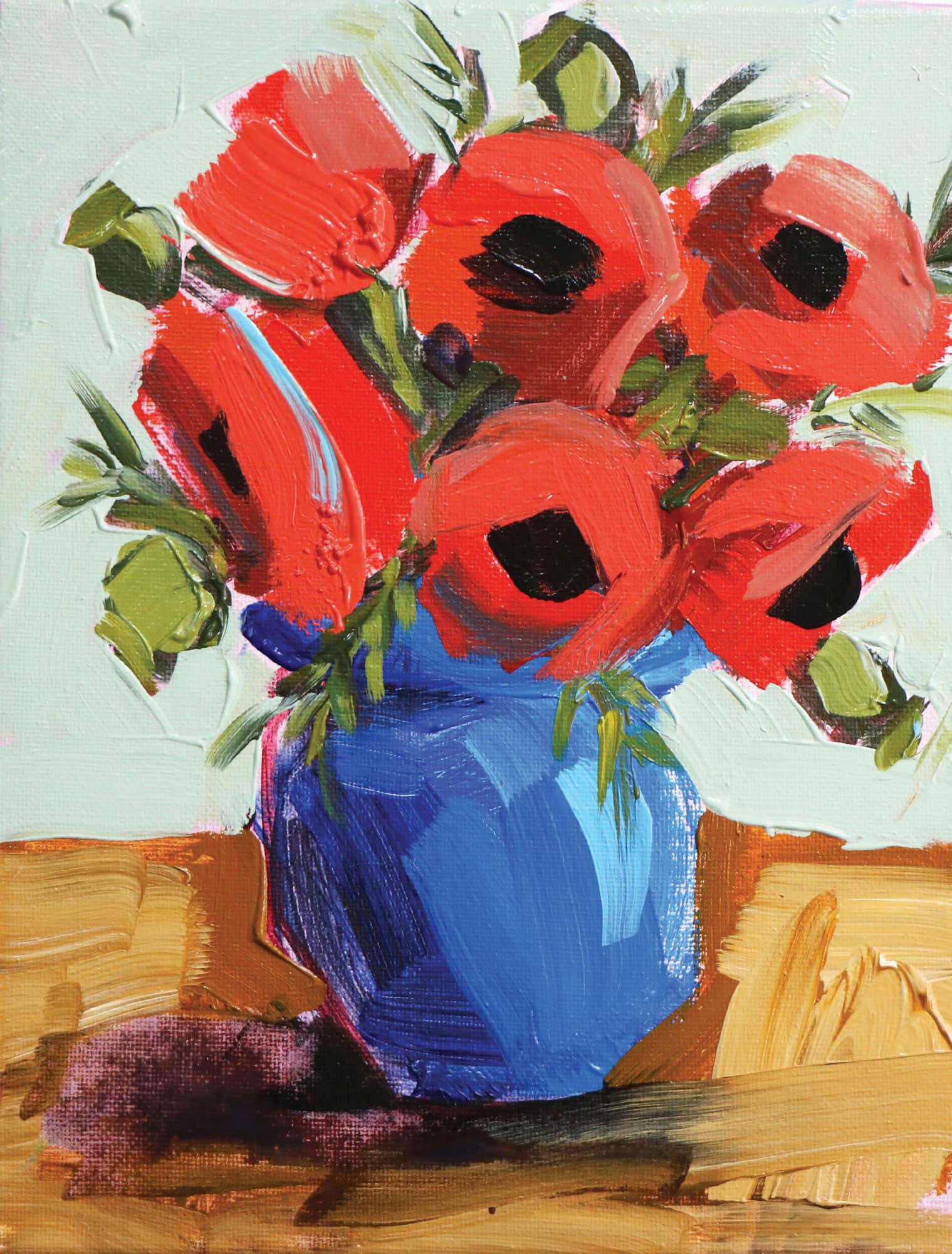LEVEL: INTERMEDIATE
Red Poppies
For this project, we will paint a more complex still life of red poppies in a blue vase. Fluid paints come in bottles instead of tubes and are runnier. If you cannot find them, water down your tubes of black and crimson paint on the palette.
STEP ONE
For the underpainting, mix up some red, blue, and white to create a soft violet wash to cover the canvas.
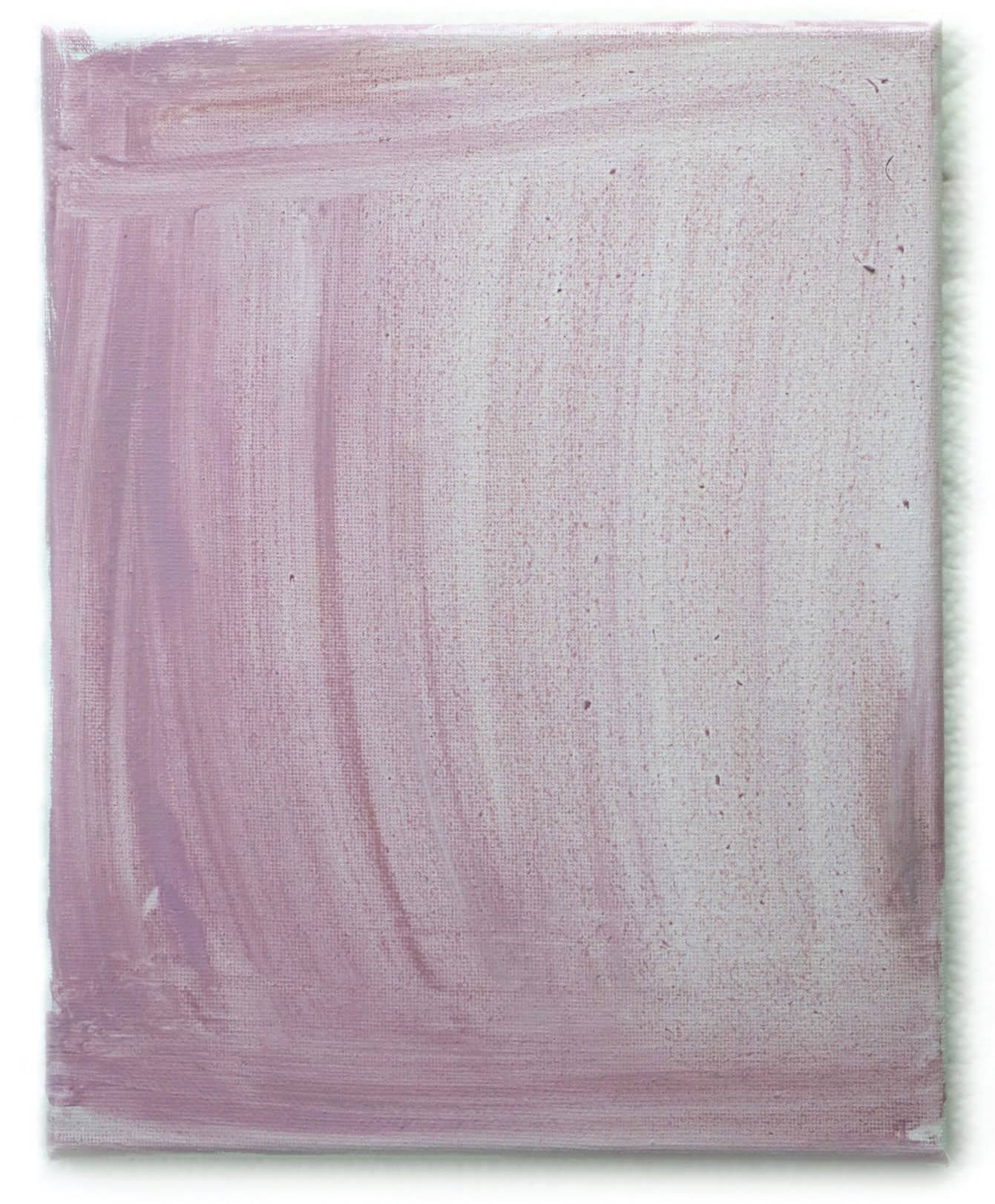
STEP TWO
Once the wash of paint is completely dry, use alizarin crimson and a small brush to sketch out a vase and flowers. Make sure the vase is no more than half the height of the canvas. The horizon line (the table behind the flowers) should be somewhere in the bottom half of the canvas.
Sketch in the poppies with dark centers and a few leaves and seedpods. Remember that the flowers will be facing different directions, so the dark centers should be off-center in most of the flowers.
Add various leaves and a few oval seedpods with a flat tops and stems. Poppy leaves have many fingerlike leaves coming off the stem, so add lines branching off like pine needles for this effect.
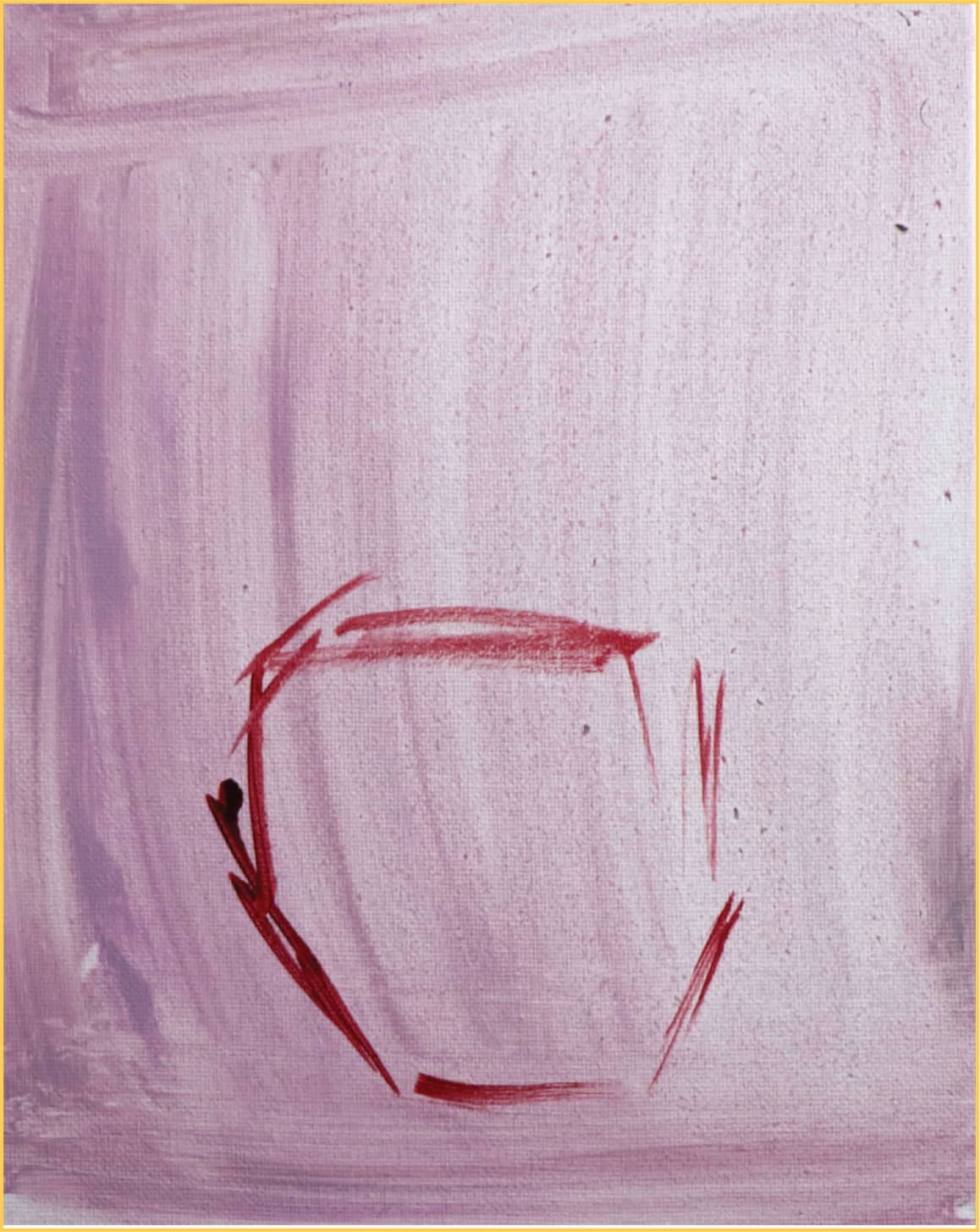
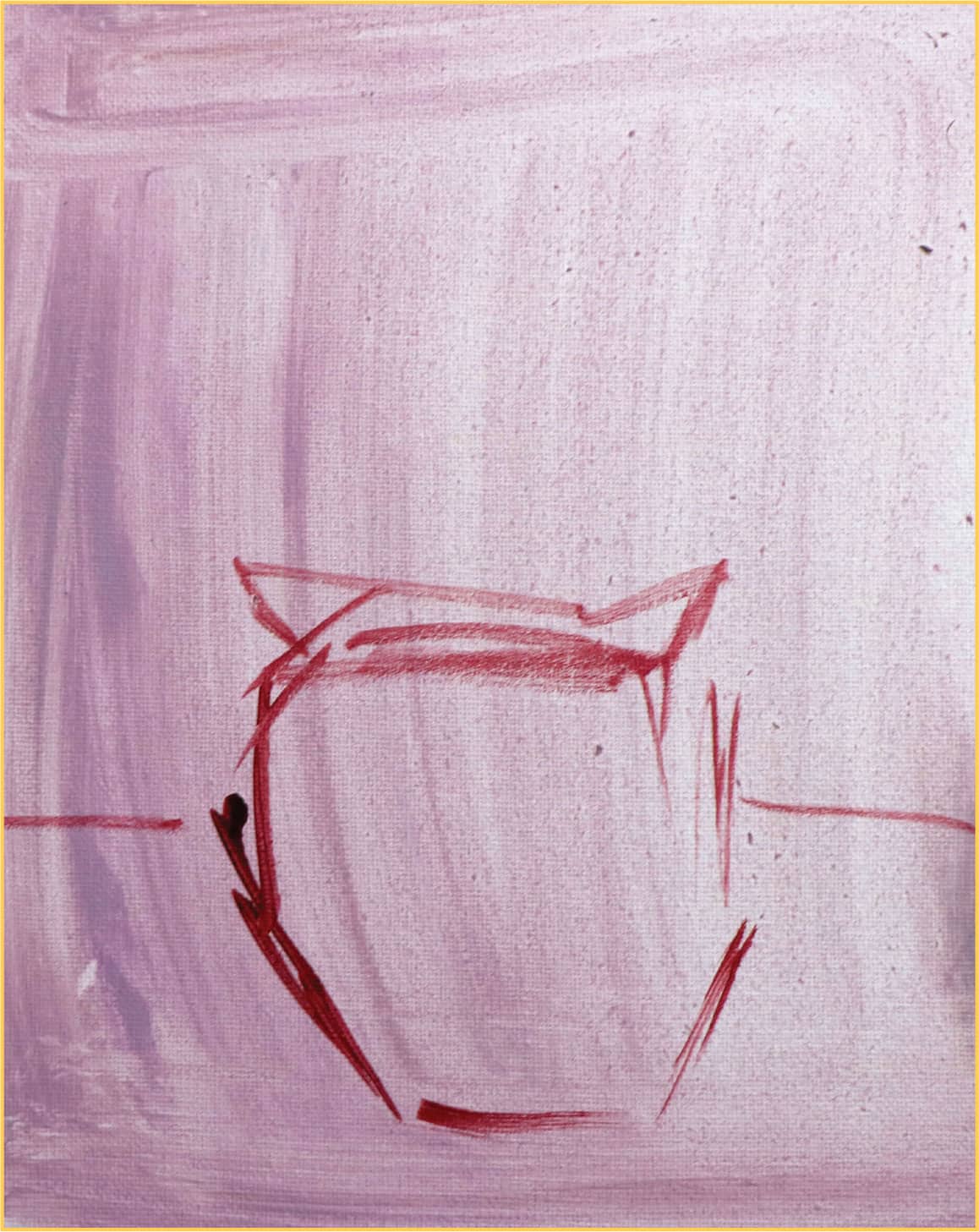
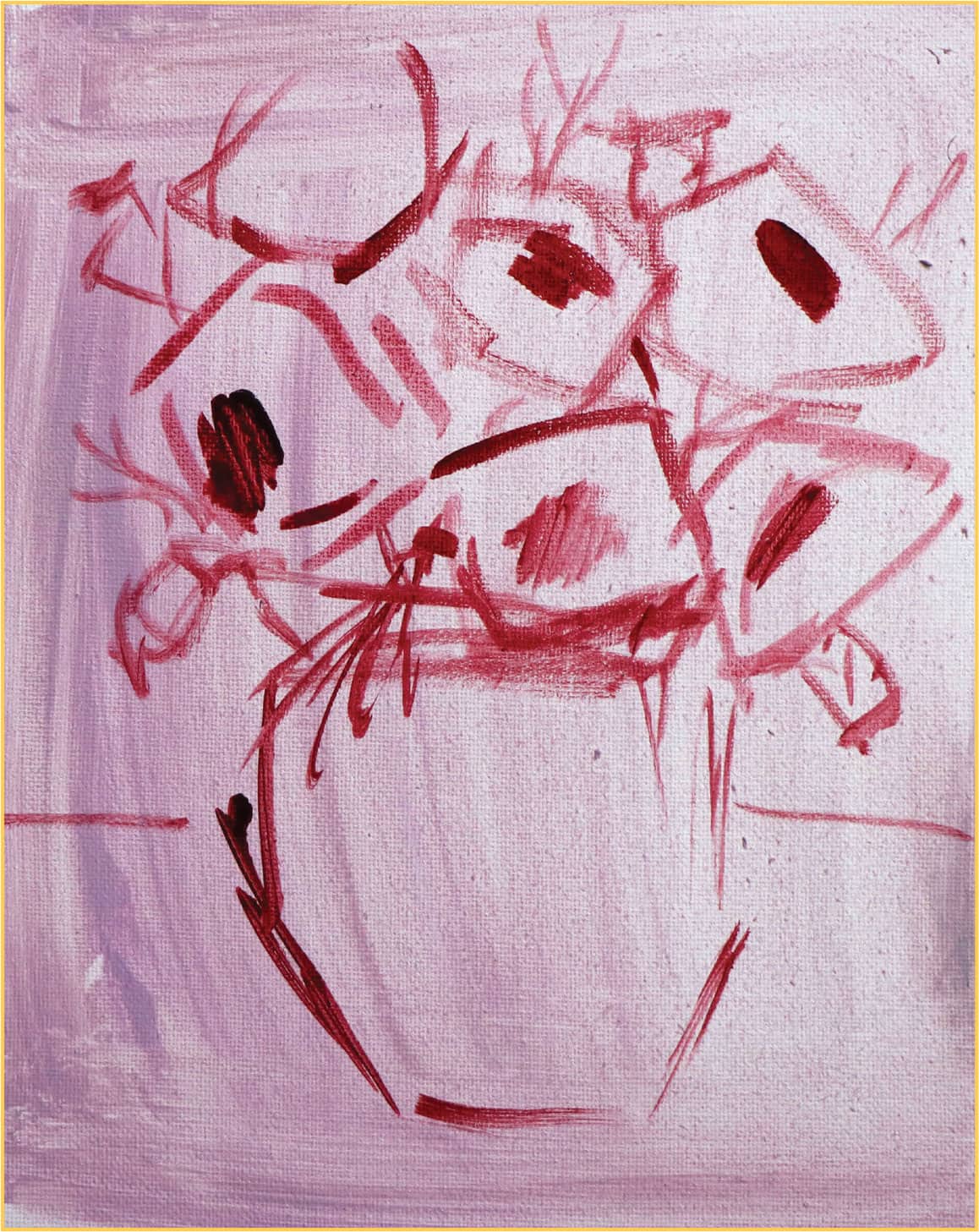
STEP THREE
Time to add the paints to your palette if you haven’t already. Use your spray bottle to keep the paints moist on the palette.
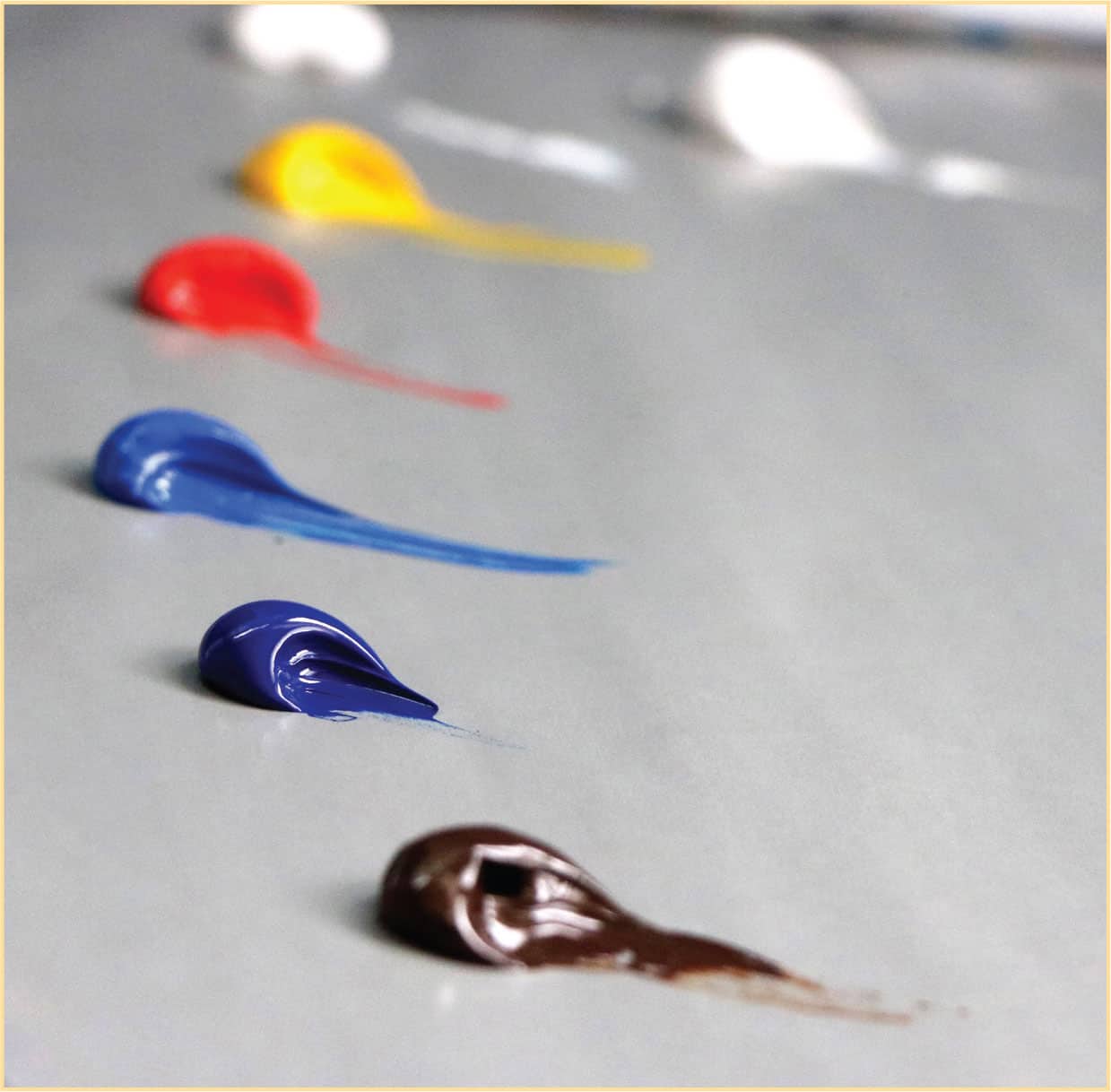
STEP FOUR
Paint your vase blue making a shadow side using the ultramarine blue mixed with small amounts of red and yellow. Use cobalt for the front-center area of the vase, and mixtures of cobalt blue, white, and even a little yellow for the lighter side of the vase and rim. Think about where the light would hit the vase.

STEP FIVE
Mix up various piles of red for the poppies.
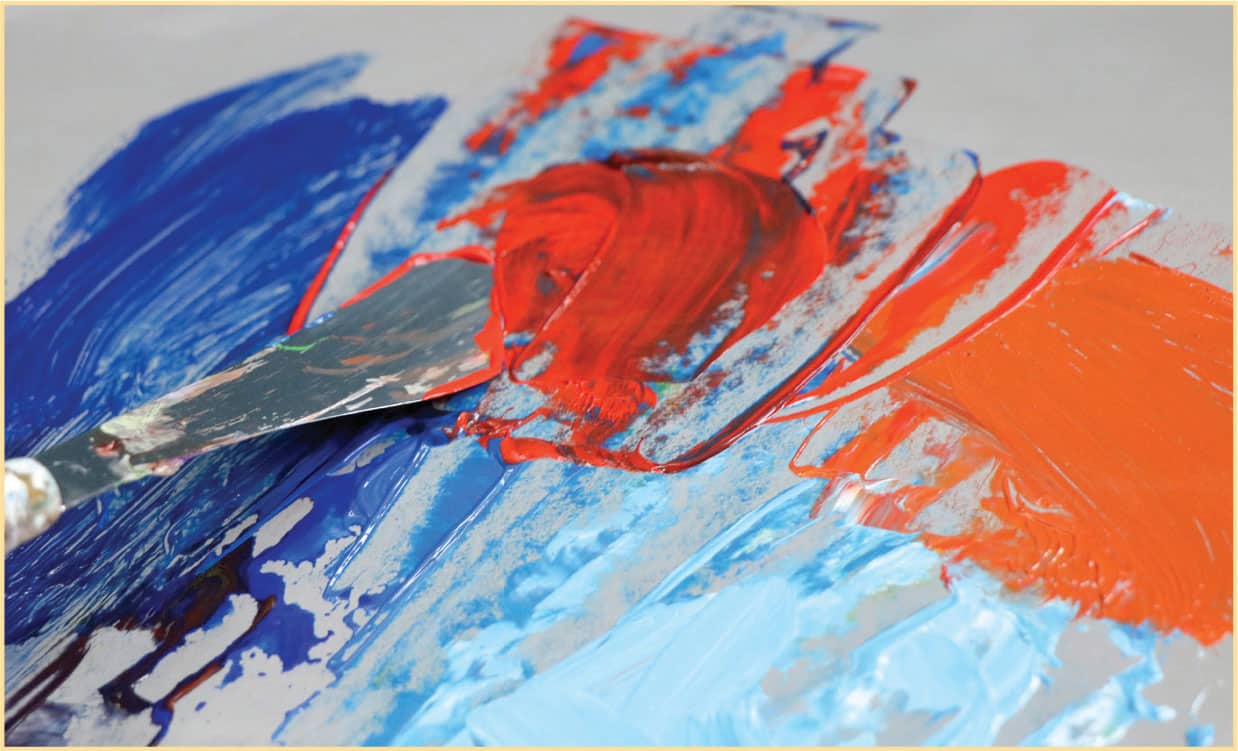
STEP SIX
Lay down some of the darker and brighter shades of your red paint mixtures.
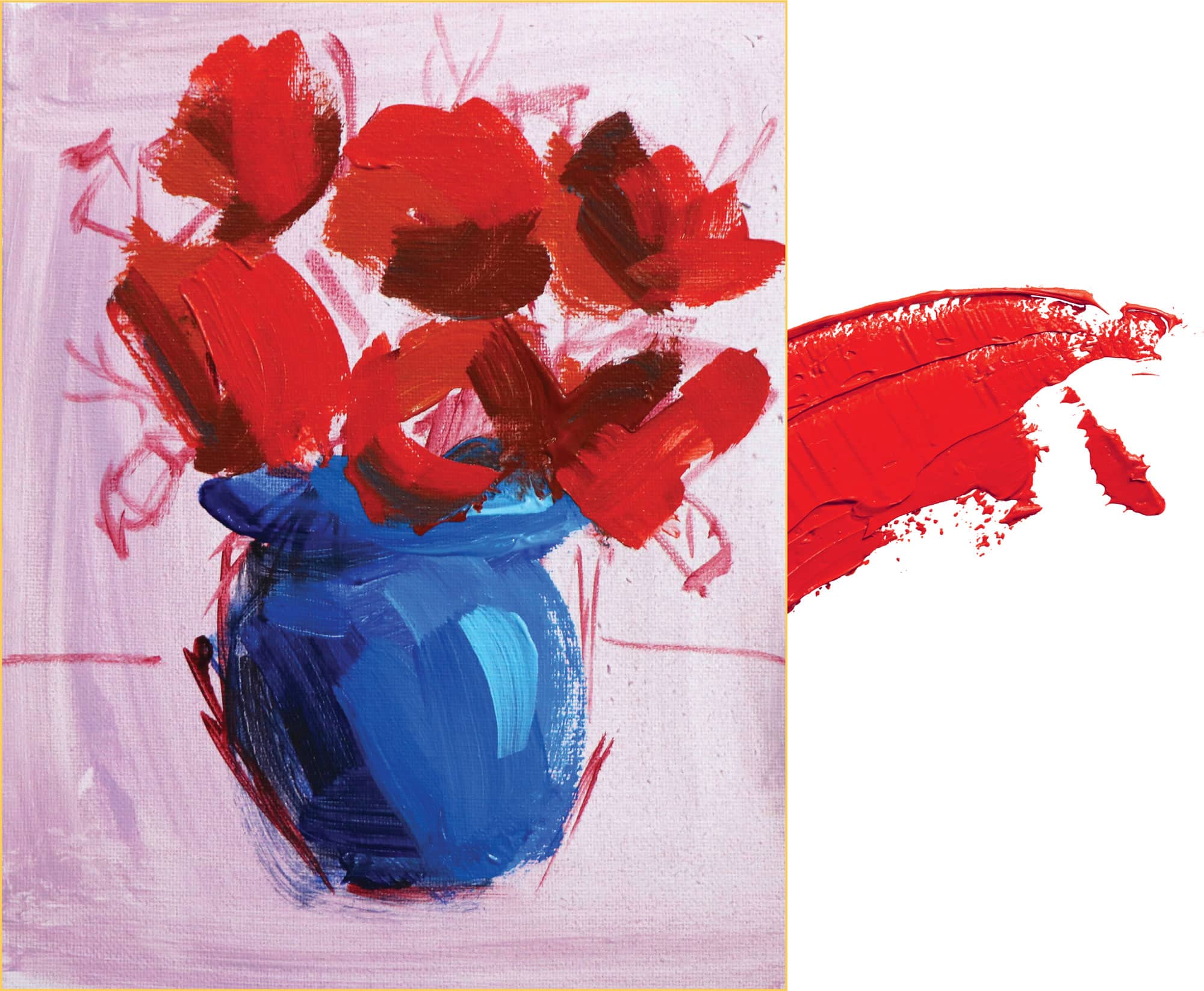
STEP SEVEN
Mix piles of light and dark green paint using mixtures of blue and yellow with a touch of red or orange. Try to avoid adding white to lighten your leaf and seedpod colors; instead, use yellow. You can also add a little black or alizarin crimson to darken your green paint.

STEP EIGHT
Paint the leaves and seedpods. Make sure your seedpods organically move in different directions. Some of the leaves can poke up or bend over the side of the vase. Overlapping some leaves or flower petals over the vase will add to the 3-D effect of the art.
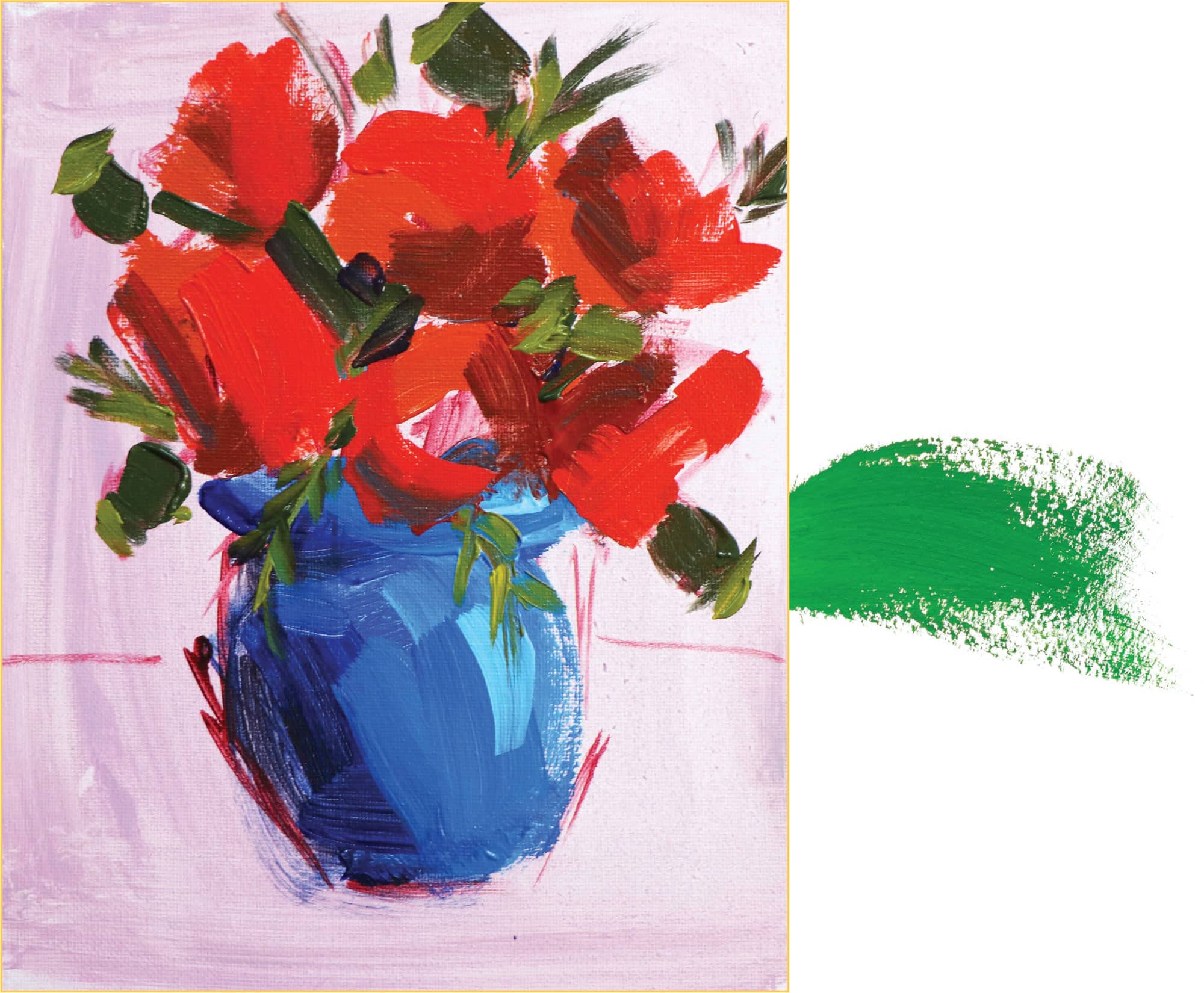
STEP NINE
Mix up some black and crimson paint for the flower centers. Remember, not all of the centers should be centered. Some should be barely showing, and most off-center as they would appear in a vase.

STEP TEN
Use some of the dark flower center paint to add a shadow layer below the vase. I watered down this paint even more and mixed it around and blended it a little to keep it from looking so harsh.

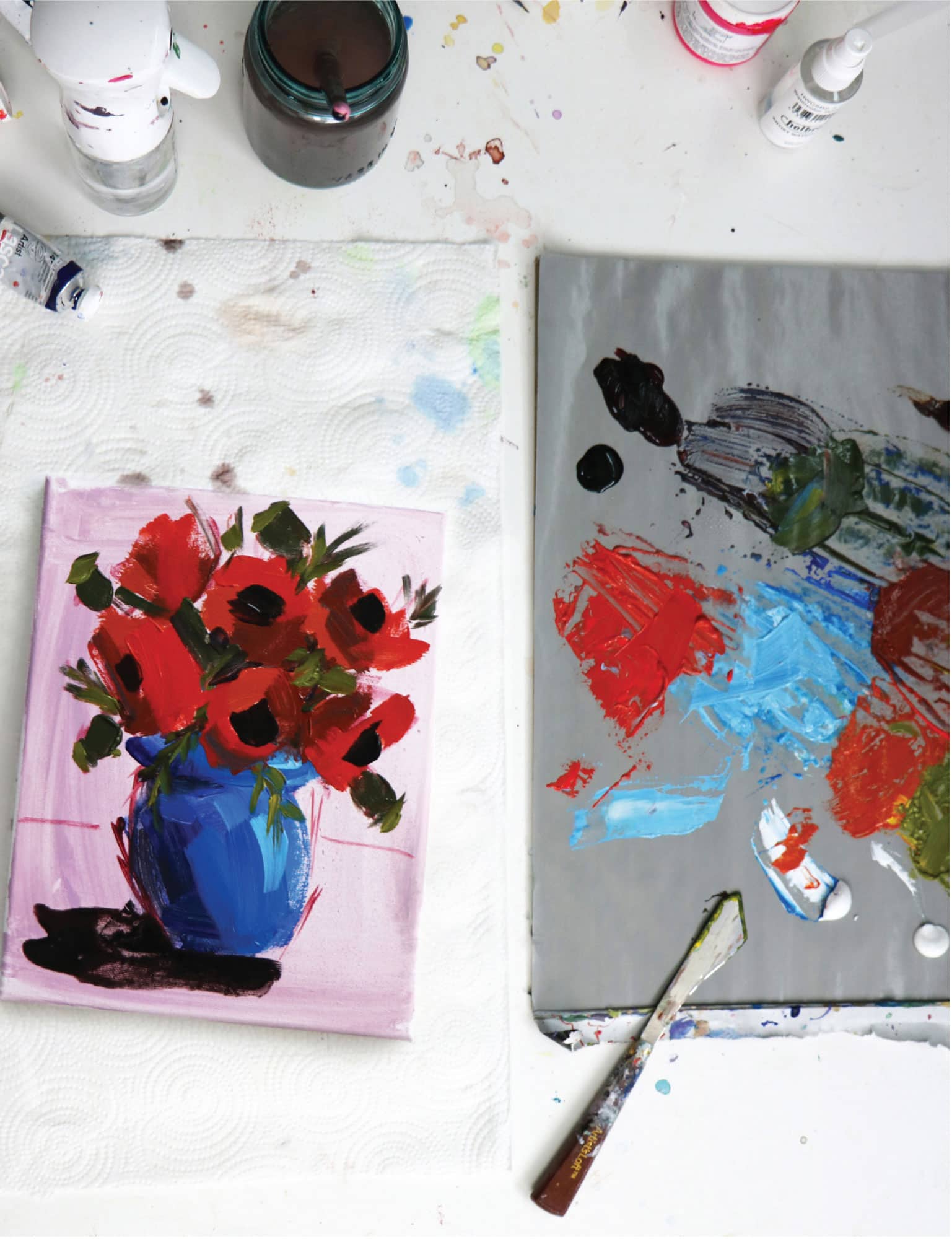
STEP ELEVEN
Add the lightest red petals, highlights to the vase, and seedpods.

STEP TWELVE
Next, mix the transparent brown iron oxide with yellow. Paint the table around the vase with a few strokes, and then change the color a little by adding some more brown, yellow, or white.

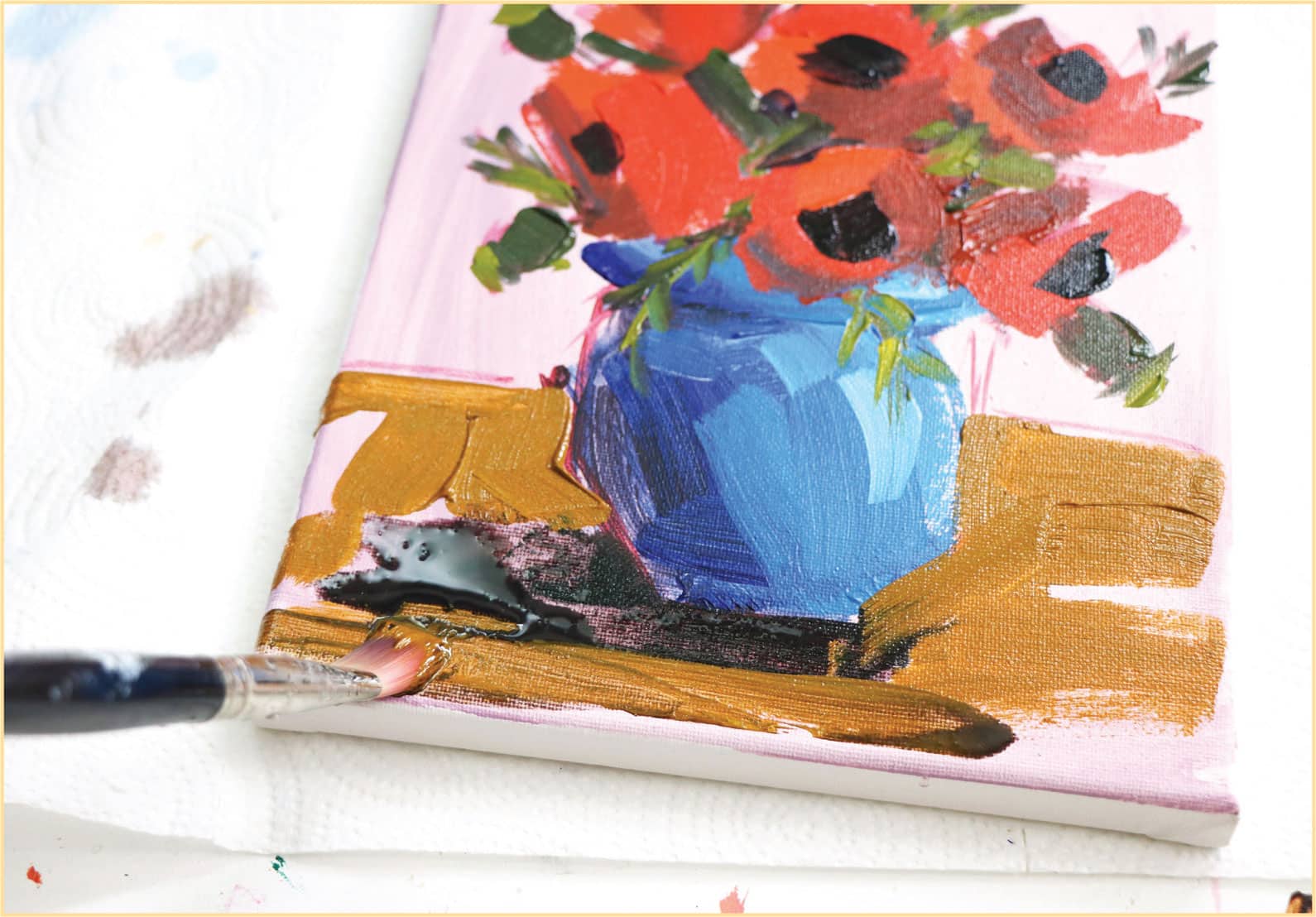
STEP THIRTEEN
For the background color around the flowers, add some green and white paint to the light blue mix left over from your vase. Thin as needed to make it spreadable.

STEP FOURTEEN
Using a flat brush, apply bold brushstrokes to the background around the flowers. Use the side of the brush to get into the tight areas.

STEP FIFTEEN
Mix some of the leftover background paint mixture into the lightest pile of red for highlights on the poppy flowers. Add highlights to some of the petals near the tops and edges of the flowers.
Add some of the background paint to a pile of green paint to make highlights on the leaves and seedpods.

